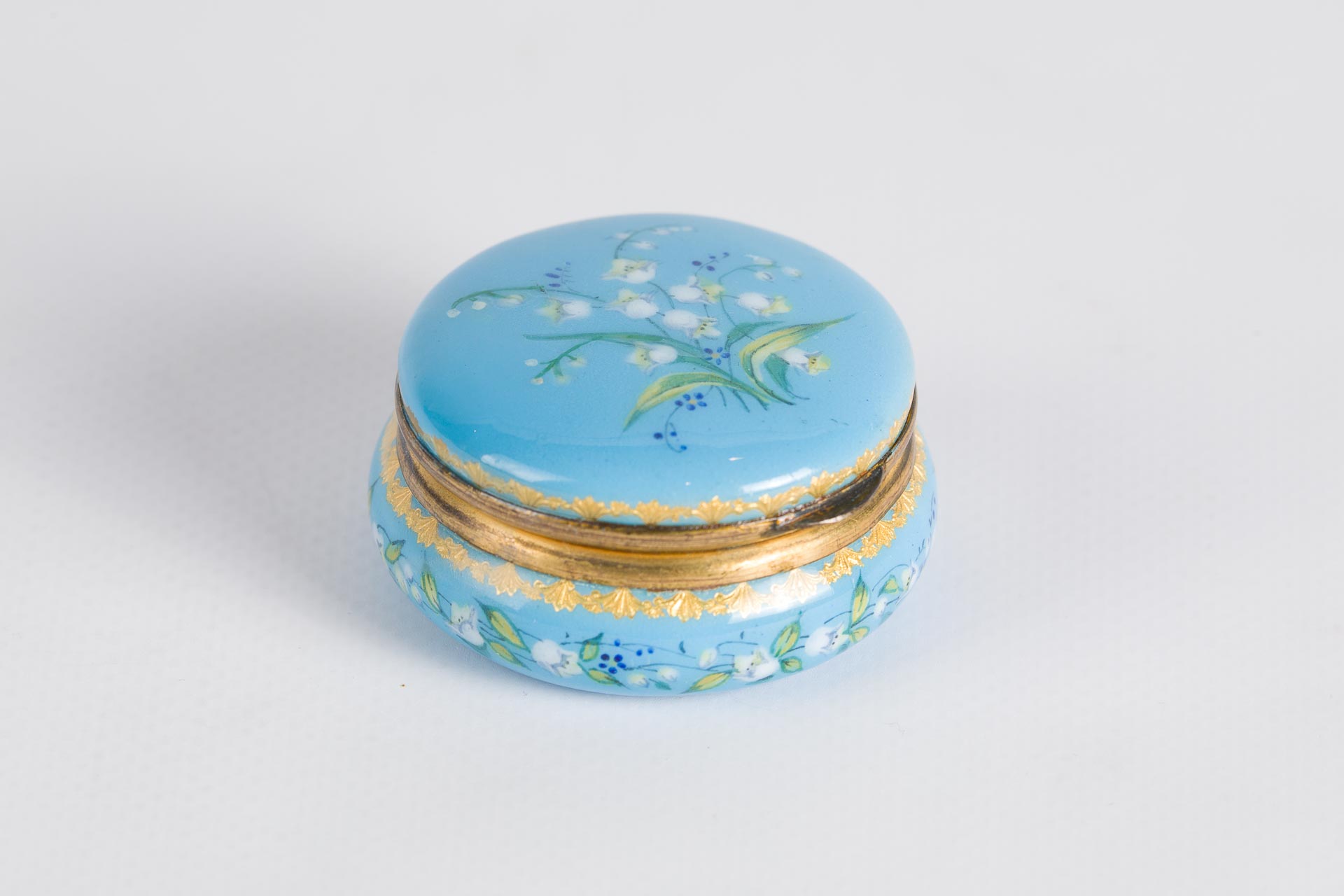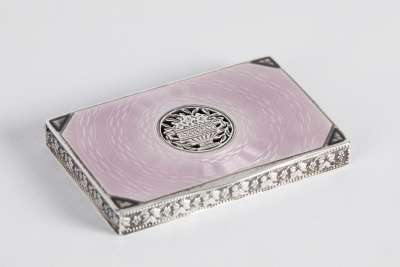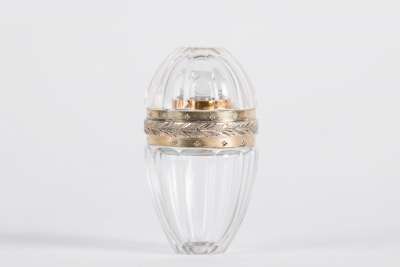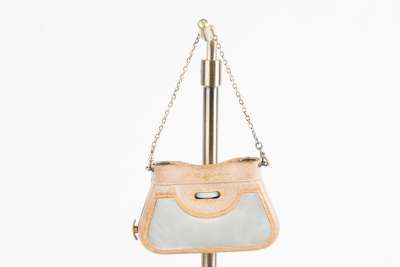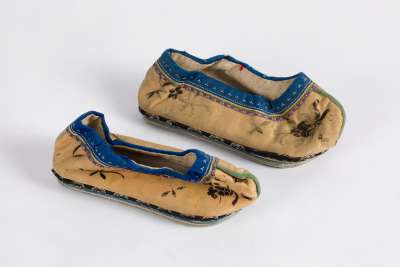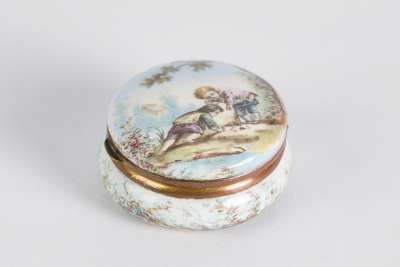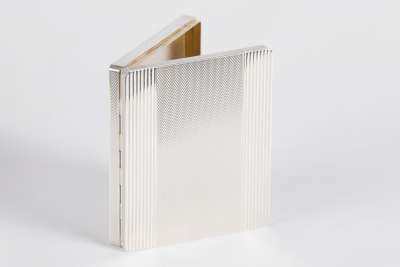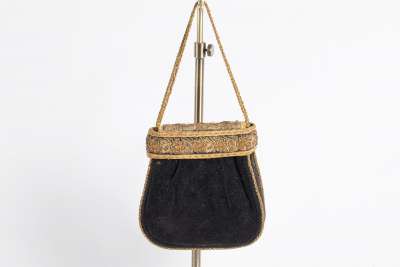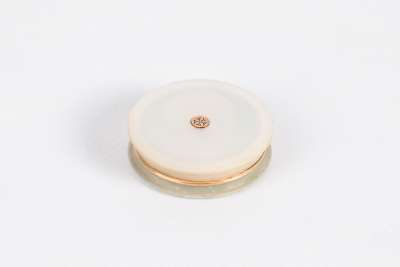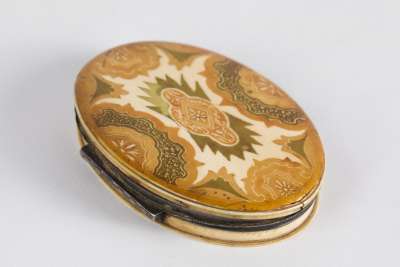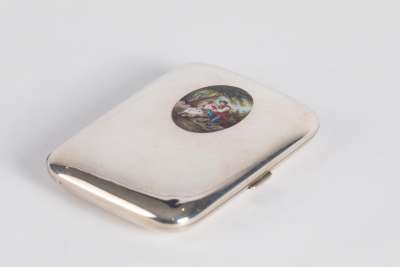This French enamel box, dating from circa 1860-1880, is a remarkable example of 19th-century craftsmanship. The box features a delicate Lily of the Valley decoration, a popular motif symbolising the return of happiness and purity. Its elegant design is characteristic of the period, showcasing a nuanced blend of artistry and functionality. The box is likely to have originated in France, renowned for its exquisite enamel work at the time. Its compact dimensions make it a charming addition to any collection of fine decorative objects.
Condition Report
This French enamel box is in very good condition, exhibiting minimal signs of age and wear. The enamel remains intact with its colours maintaining their vibrancy, indicating careful preservation. There are no noticeable chips or cracks, and the painted decoration retains its intricate detail. Given its age, the box's structural integrity is commendable, with the lid fitting snugly onto the base. These factors contribute positively to its value as an antique, ensuring it remains a prized piece for collectors and enthusiasts alike.
Dimensions
Weight: 65gm, Length: 5.3cm, Width: 5.3cm, Height: 2.3cm.
A Decorative Trinket Holder
The original intended use of this French enamel box was likely as a trinket holder or a decorative piece for personal items. During the 19th century, such boxes were commonly used to store small personal effects, such as jewellery, keepsakes, or even snuff. The box's compact size and decorative nature made it a perfect addition to a lady's dressing table, offering both functionality and aesthetic appeal. Its design, featuring the Lily of the Valley, would have been particularly appealing to individuals seeking to convey elegance and refinement within their personal space.
19th-Century French Decorative Arts
This enamel box is a fine example of 19th-century French decorative arts, a period marked by intricate detailing and the use of vibrant colours. The Lily of the Valley motif is a classic example of the naturalistic themes popular at the time, reflecting the broader artistic movements that favoured nature-inspired designs. The use of enamel as a medium allowed for a durable and lustrous finish, enhancing the visual appeal of the object. Such pieces are indicative of the period's craftsmanship, where artisans sought to create items that were both beautiful and functional.
The Craft of Enamelling
The creation of this box involved the skilled craft of enamelling, a technique where powdered glass is fused to the surface of metal or ceramics at high temperatures. This process results in a hard, glossy finish that is both decorative and protective. The Lily of the Valley design would have been meticulously painted by hand, requiring precision and a steady hand. Once completed, the piece would have undergone several firings to achieve the desired finish. Enamelling was a revered art form in 19th-century France, with artisans perfecting their techniques to produce vibrant and enduring pieces.
Attributed to French Artisans
While the specific maker of this enamel box is not identified, it can be attributed to the skilled artisans of 19th-century France, who were renowned for their mastery in enamel work. French artisans of this period were celebrated for their ability to transform everyday objects into works of art, often drawing on traditional methods while incorporating contemporary influences. The craftsmanship evident in this box reflects the high standards and attention to detail that were hallmarks of French decorative arts during this era.
Collected by Enthusiasts of Enamelware
Enamel boxes such as this one are highly sought after by collectors of 19th-century decorative arts, particularly those with a focus on French enamelware. These pieces offer insight into the artistic trends and technological advancements of the period. Collectors are drawn to the intricate designs, the skill involved in their creation, and the historical context they represent. The enduring popularity of enamel boxes is a testament to their beauty and the craftsmanship of the artisans who created them, making them prized possessions in collections around the world.
